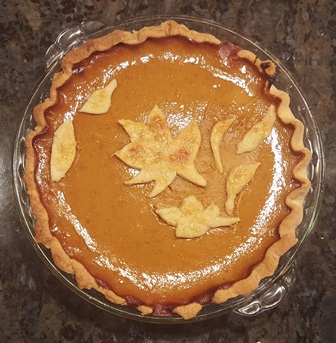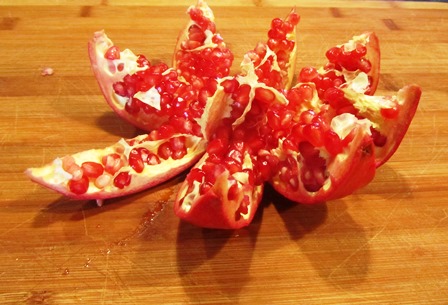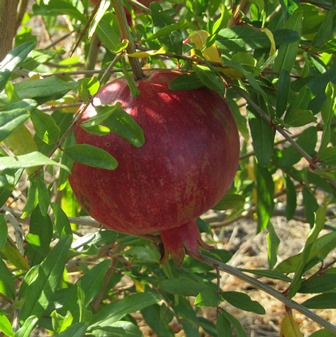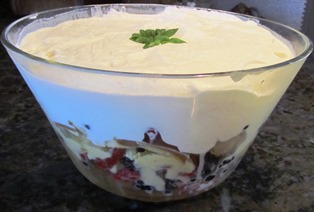Thanksgiving Work Blesses the Giver and Receiver
On Thanksgiving, our family is usually grouped in the kitchen working our magic on individual dishes for our communal feast. But this year, things were different. My daughter is recovering from emergency surgery and her hubby has been trying to get over a bout of pneumonia. Their twin daughters had just come home from college, so when my daughter asked me if I would mind planning and shopping for the whole meal and then cooking it, I jumped at the chance.
My enthusiasm was not dampened by the fact that I was working on a new book and writing it against a “slam” deadline. Though this deadline is tighter than usual, I enjoy the topic, so it’s not really work. Ah, but there are other things to do as well. With the cold weather and the rain, I’m keeping a close eye on my plants, chickens, and bees. Still, Thanksgiving offered me a break from the norm. My daughter asked me to help make this holiday special and I wasn’t about to let her down. As it turns out, serving as the family chef lightened my heart and gave me the opportunity to be mindful of each special moment in our Thanksgiving day.
- There is always a passion for pecan pie in our family
Although I intended to do the cooking myself and had already baked the pumpkin and pecan pies and had whipped up a layered trifle for dessert, I asked my beautiful, brilliant granddaughters for help. There were sweet potatoes to peel, green beans to prepare, cornbread to be made, herbs to chop, and the turkey to be stuffed and cooked.
By two o’clock, the table was set, the food laid out, and the feast begun. We offered thanks for our blessings and asked for God’s grace on others and especially family members who hadn’t made the trip this time. Then, we made a special request for good health. The twins and I had used natural ingredients imbued with love for our food offerings and so believed that our gifts would put their mom and dad on the road to health in no time.
Today–Black Friday–I’m back to writing my book and feeling confident about the direction I’m going as well as the hours and minutes I have left to get there. And honestly, I’d rather be writing than shopping.

Our pumpkin pies feature leaves made from pate brisee dough, brushed with egg, and sprinkled with sugar before baking; they’re attached after the pie is baked.
Tonight, we’re going to eat leftovers with the addition of a simple winter salad–seeds from a ripe pomegranate, sections of a tangerine or two, slices of blood orange and a ripe pear tossed into some fresh greens along with small chunks of goat cheese and walnuts–drizzled with a toasted sesame dressing. And best of all, I can pluck most of the fruit walking around the farmette after I check on the plants, the bees, and the chickens. There’s work to do–plenty of it. But the way I see it, I’m honored to do work that blesses both the giver and the receiver.
* * *
Enjoy reading about farming topics? Check out my cozy mysteries–A BEELINE TO MURDER and also THE MURDER OF A QUEEN BEE (both in the Henny Penny Farmette series from Kensington Publishing).
These novels are chocked full of recipes, farming tips, chicken and beekeeping tips, sayings and, of course, a charming cozy mystery. For more info, click on the links under the pictures.
The books are available through online retailers such as Amazon, Barnes & Noble, Kobo Books, and Walmart as well as from traditional bookstores everywhere.
See, http://tinyurl.com/hxy3s8q
This debut novel launched the Henny Penny Farmette series of mysteries and sold out its first press run. It’s now available in mass market paperback and other formats.
See, http://tinyurl.com/h4kou4g
NEWLY RELEASED! This, the second cozy mystery in the Henny Penny Farmette series, is garnering great reviews from readers and industry publications.
Pomegranate Seeds–A Sweet Explosion on the Tongue
Strolling through our small orchard today, I cut into a pomegranate to check on the seeds–the edible part of the fruit. To my surprise, they had turned ripe. Inside, the seeds were gorgeous red jewels, plump and juicy. The sweet juice in the seeds carries a powerful antioxidant punch, too; it’s loaded with Vitamin C, Vitamin K, fiber, potassium, protein, and folate.
You might wonder about ways of cooking with pomegranate seeds. How about tossing them into citrus or a green salad, pairing them with goat cheese on a crostini, or sprinkling a few on poached pears dipped in chocolate, or incorporate them into a Mediterranean couscous with cashews or pistachios?
I think I’ll make some pomegranate jelly–it tastes great on toast, makes an excellent foil for goat cheese, and also creates a moist and delicious glaze for chicken.
The hardest part of making the jelly is separating the seeds from the white pith that holds the seeds in place inside the leathery peel.
The jelly recipe consists of few ingredients: pomegranate juice, sugar, water, and classic pectin. Here’s how I make the jelly.
POMEGRANATE JELLY RECIPE
Ingredients:
3 1/2 cups pomegranate juice (well strained to remove all the particles)
5 cups granulated sugar
6 tablespoons classic pectin
Directions:
Prepare boiling water canner and wash eight to ten half-pint jars in the dishwasher.
Place rings and lids in a pan of simmering hot water.
Cut one end of the pomegranate off to expose the membranes and seeds.
Section the pomegranate and scrape the seeds out into a medium to large bowl.
Repeat the process until you had several cups of seeds.
Rinse well and then run the seeds through a juice extractor.
Strain out the juice through a jelly bag or multiple layers of cheesecloth. Note: The juice stains, so take care to protect kitchen counters and clothing.
Put the juice and pectin into a large pot and bring to a boil, carefully stirring to blend in the pectin.
Add sugar and stir until completely dissolved and boil for one minute at a roiling boil that cannot be stirred down. Ladle off foam, if necessary.
Ladle jam into clean, hot jars leaving one-quarter inch head space. Attach hot lids and then the rings. Tighten to finger tight.
Lower the filled and sealed jars into the canner. Process for 10 minutes at a roiling boil. Remove and let cool.
* * *
If you enjoy reading about farmette topics (including gardening, beekeeping, and delicious recipes), check out my cozy mysteries A BEELINE TO MURDER and also THE MURDER OF A QUEEN BEE in the Henny Penny Farmette series (from Kensington Publishing).
These novels are available through online retailers such as Amazon, Barnes & Noble, Kobo Books, and Walmart as well as from traditional bookstores everywhere.
See, http://tinyurl.com/hxy3s8q
Now available in mass market paperback, this debut novel launched the Henny Penny Farmette series of mysteries and sold out its first press run.
See, http://tinyurl.com/h4kou4g
The second cozy mystery in the Henny Penny Farmette series, available Sept. 27, 2016, is now available on Net Galley (netgalley.com) for professionals and readers who write reviews. The book may be pre-ordered as well. Click on the link under the image.
Warm Pomegranate Sauce Dressing Dazzles on Spinach Salad

Pomegranate seeds add sweetness and crunch to salads but can eaten fresh, or you can extract the juice to make a lovely sauce.
Use fresh pomegranate juice if you would like a delicious sauce to use in salad dressing or other culinary creations. Pomegranate sauce made into a warm salad dressing dresses up a plain spinach salad like nothing else.
The warm pomegranate dressing is made by combining to blend 1/2 cup pomegranate sauce (recipe below), 1 Tablespoon of honey, 1 1/2 teaspoons minced fresh ginger, 1 cup California extra-virgin olive oil, and 1/2 cup coarsely chopped walnuts. Warm the dressing and pour over over a pound of freshly washed spinach leaves, 1/2 cup red onion, and 1 orange (peeled, seeded and with segments quartered).
Here’s how to make and preserve the pomegranate sauce.
INGREDIENTS:
5 cups of pomegranate juice (reamed from about 10 large fruits)
1/2 cup lemon juice
1 cup sugar
DIRECTIONS:
Wash thoroughly ten large pomegranates.
Cut in half and use a reamer to extract the juice from the seeds, discarding the membrane.
Strain the juice through cheesecloth several times to obtain 5 cups.
Combine the juice, lemon, and sugar in a large saucepan over medium-high heat.
Bring to a boil and then turn down the heat and simmer at 180 degrees Fahrenheit.
Reduce the sauce by half.
PROCESS:
Have ready 4 half-pint jam jars that have been washed on a hot cycle in the dishwasher and dried.
Fill the canner with water, place on heat, and bring to a simmer.
Simmer jar lids and rings.
Fill the jars with the pomegranate sauce, leaving 1/4 inch head space.
Affix hot lids to the jars and screw on the rings.
Lower the jars on the rack into the canner (water must cover the jars by at least an inch) and boil the water for 10 minutes.
Remove the jars of sauce and allow to cool.
Check seals, label, and then store until needed.
For more delicious recipes, farming tips, and beekeeping strategies as well as a cozy mystery, check out the first book in the Henny Penny Farmette series from Kensington Books in New York. Available on Amazon.com, Barnesandnoble.com, and in other online and traditional bookstores everywhere.

De-Seeding a Pomegranate
Pomegranates are known since biblical times as a food of the gods. When ripe, the fruit’s leathery skin often splits open, exposing the red seeds inside. The fruit hangs like a jewel from a strong stem that must be cut or twisted to release the fruit.

Ripe pomegranates have a leathery outer skin, membranes thicker than oranges, but sweet, juicy seeds inside
Inside a ripe pomegranate are hundreds of juicy, sweet seeds that resemble small pegs of sweet corn. Holding the seeds in place are membranes.
The ruby red juice will stain fabrics and your fingers, so you’ll want to be careful handling the fruit as you release the seeds. The juice will stain your cutting board, too, but that stain can be removed with a lemon juice or vinegar scrub.
Cut off the stem and the blossom end.
Make a long shallow cut from the top to the bottom and up the other side, but avoid cutting deeply to avoid damaging the seeds. Then rotate the fruit and make a second cut completely around. Make 6 or 8 such shallow cuts to create equal sections.
Pry open the fruit to expose the seeds (known as arils). Place the fruit into a basin of water for 5 minutes. Working over the basin, peel the skin off and strip away the membrane pieces to release all the seeds.
Pluck out the membranes and rinse the seeds in a strainer. They are ready to be tossed into salads, eaten fresh, or stored in an airtight container (not metal) for 3-4 days. The seeds may also be made into juice; however, straining the juice from the seed pulp will be necessary.
If you keep chickens, it might interest you to know they love fresh pomegranate seeds. Seeing a ripened fruit with its peel split open and seeds exposed is a temptation for them to peck at low-hanging fruit on the tree.
 Facebook
Facebook Goodreads
Goodreads LinkedIn
LinkedIn Meera Lester
Meera Lester Twitter
Twitter










